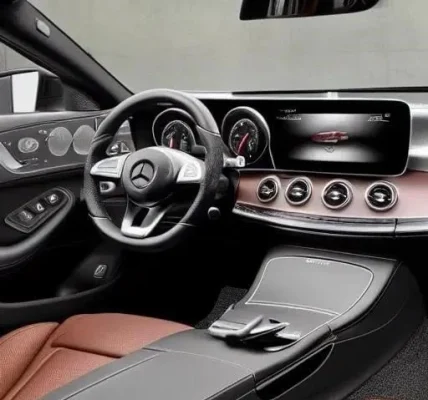The automotive industry has consistently sought innovative materials to enhance vehicle performance, durability, and aesthetics, and one such breakthrough is the use of fiberglass car bodies․ These composite structures have offered a compelling alternative to traditional steel, providing significant advantages in terms of weight reduction, design flexibility, and resistance to corrosion․ The adoption of fiberglass car bodies marked a significant shift in automotive manufacturing, allowing for more streamlined production processes and the creation of uniquely styled vehicles․ From iconic sports cars to practical utility vehicles, fiberglass has played a vital role in shaping the landscape of automotive design․
The Advantages of Fiberglass: A Deeper Dive
Fiberglass, a composite material made from glass fibers embedded in a resin matrix, boasts a range of benefits that make it an attractive choice for car body construction:
- Lightweight: Fiberglass is significantly lighter than steel, leading to improved fuel efficiency and handling․
- Corrosion Resistance: Unlike steel, fiberglass doesn’t rust, extending the lifespan of the vehicle and reducing maintenance costs․
- Design Flexibility: Fiberglass can be molded into complex shapes with relative ease, allowing for greater design freedom;
- Impact Resistance: While not as strong as steel in all aspects, fiberglass can absorb significant impact energy, providing a degree of protection in collisions․
- Cost-Effective: In certain production scenarios, fiberglass can be more cost-effective than steel, particularly for low-volume manufacturing․
Fiberglass vs․ Steel: A Comparative Analysis
| Feature | Fiberglass | Steel |
|---|---|---|
| Weight | Lighter | Heavier |
| Corrosion Resistance | Excellent | Poor |
| Design Flexibility | High | Lower |
| Impact Resistance | Good (absorbs energy) | Excellent (high tensile strength) |
| Cost (Low Volume) | Lower | Higher |
| Cost (High Volume) | Higher | Lower |
The Evolution of Fiberglass in Automotive Manufacturing
The use of fiberglass in car body construction dates back to the mid-20th century, with early applications primarily focused on sports cars and limited-production vehicles․ As manufacturing techniques advanced, fiberglass found its way into a wider range of vehicles, including trucks, vans, and even some passenger cars․ The benefits of lighter weight and corrosion resistance are undeniable․
Challenges and Future Trends
Despite its advantages, fiberglass is not without its limitations․ Repairing damaged fiberglass can be more complex than repairing steel, and the material can be susceptible to damage from prolonged exposure to ultraviolet (UV) radiation․ However, ongoing research and development are addressing these challenges, with advancements in resin technology and manufacturing processes leading to stronger, more durable, and more UV-resistant fiberglass composites․ The future of fiberglass in automotive manufacturing looks promising, with potential applications in electric vehicles and other advanced designs․
Looking ahead, the integration of advanced composite materials, including fiberglass, will continue to shape the future of the automotive industry․ As manufacturers strive to create lighter, more fuel-efficient, and more sustainable vehicles, the use of fiberglass car bodies is likely to expand, driving innovation and pushing the boundaries of automotive design․
Beyond Aesthetics: Functional Advantages of Fiberglass
Beyond the visual appeal and weight savings, are there other functional advantages to using fiberglass in car bodies? Does the material’s inherent damping ability contribute to a quieter and more comfortable ride? Could the ability to integrate complex shapes and aerodynamic features directly into the body panels improve fuel efficiency and handling? Are manufacturers exploring the use of fiberglass in conjunction with other lightweight materials, such as carbon fiber, to create even stronger and lighter vehicles?
Sustainability and the Future of Fiberglass
With increasing concerns about environmental impact, is fiberglass a sustainable material choice for car bodies? Can fiberglass be effectively recycled at the end of a vehicle’s life? Are there bio-based resins that can be used in fiberglass composites to reduce the reliance on petroleum-based products? Are manufacturers investing in closed-loop manufacturing processes to minimize waste and maximize the utilization of fiberglass resources? Could advancements in material science lead to the development of biodegradable fiberglass alternatives in the future?
Repairability and Long-Term Durability: Still Concerns?
Despite improvements in fiberglass technology, does the issue of repairability still pose a challenge for owners? Are fiberglass repairs more complex and costly compared to steel repairs? Does the long-term durability of fiberglass car bodies match that of steel bodies, especially in harsh weather conditions? Are there specialized repair techniques and materials that can effectively address damage to fiberglass panels? Do insurance companies typically handle claims involving fiberglass repairs differently than steel repairs?
Fiberglass in Electric Vehicles: A Perfect Match?
Given the weight-sensitive nature of electric vehicles, are fiberglass car bodies particularly well-suited for these applications? Can the lighter weight of fiberglass help to extend the range of electric vehicles? Are electric vehicle manufacturers increasingly adopting fiberglass in their designs? Does the non-conductive nature of fiberglass offer any advantages in terms of electrical safety and component integration? Could the design flexibility of fiberglass allow for more aerodynamic shapes that further improve the efficiency of electric vehicles?

